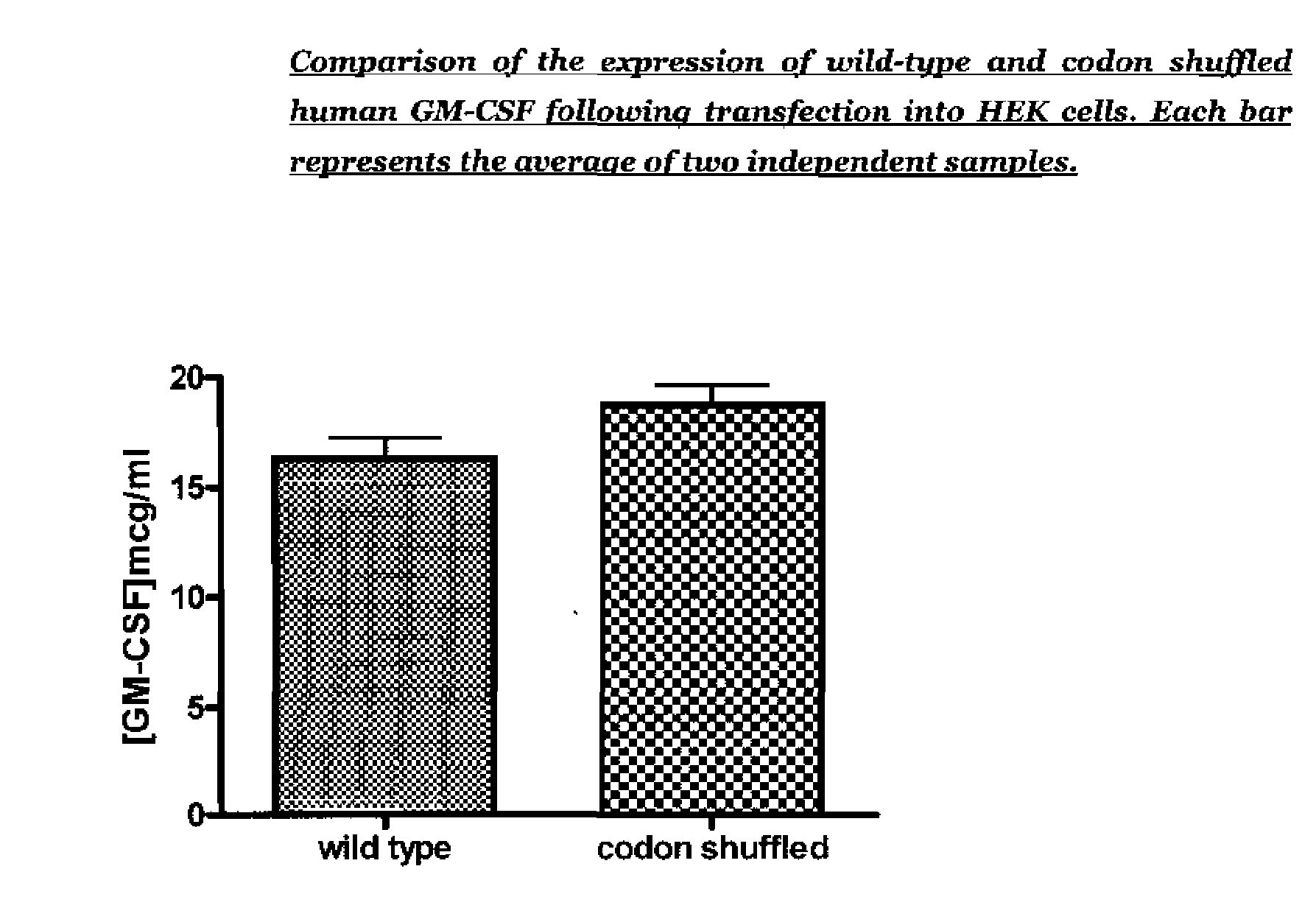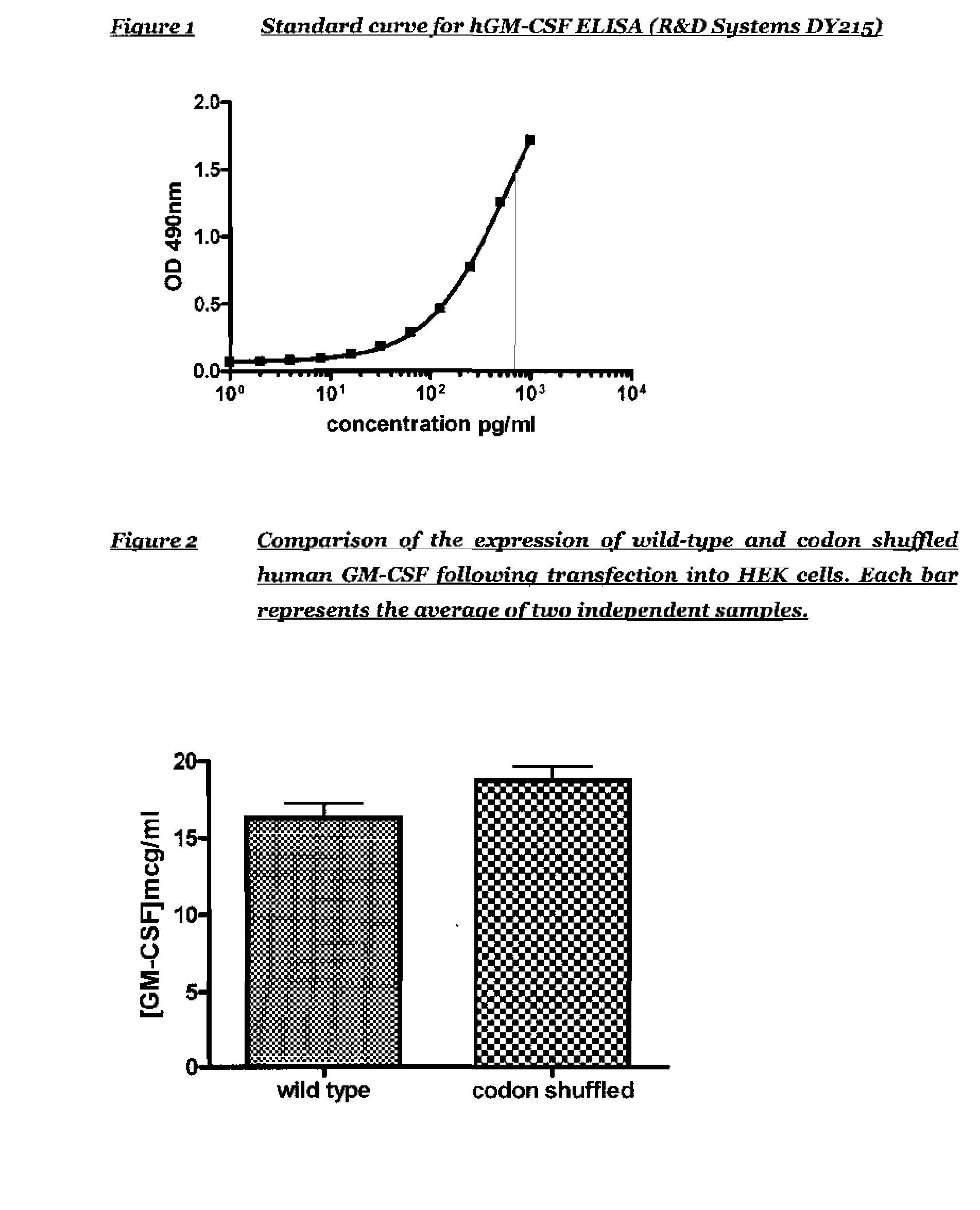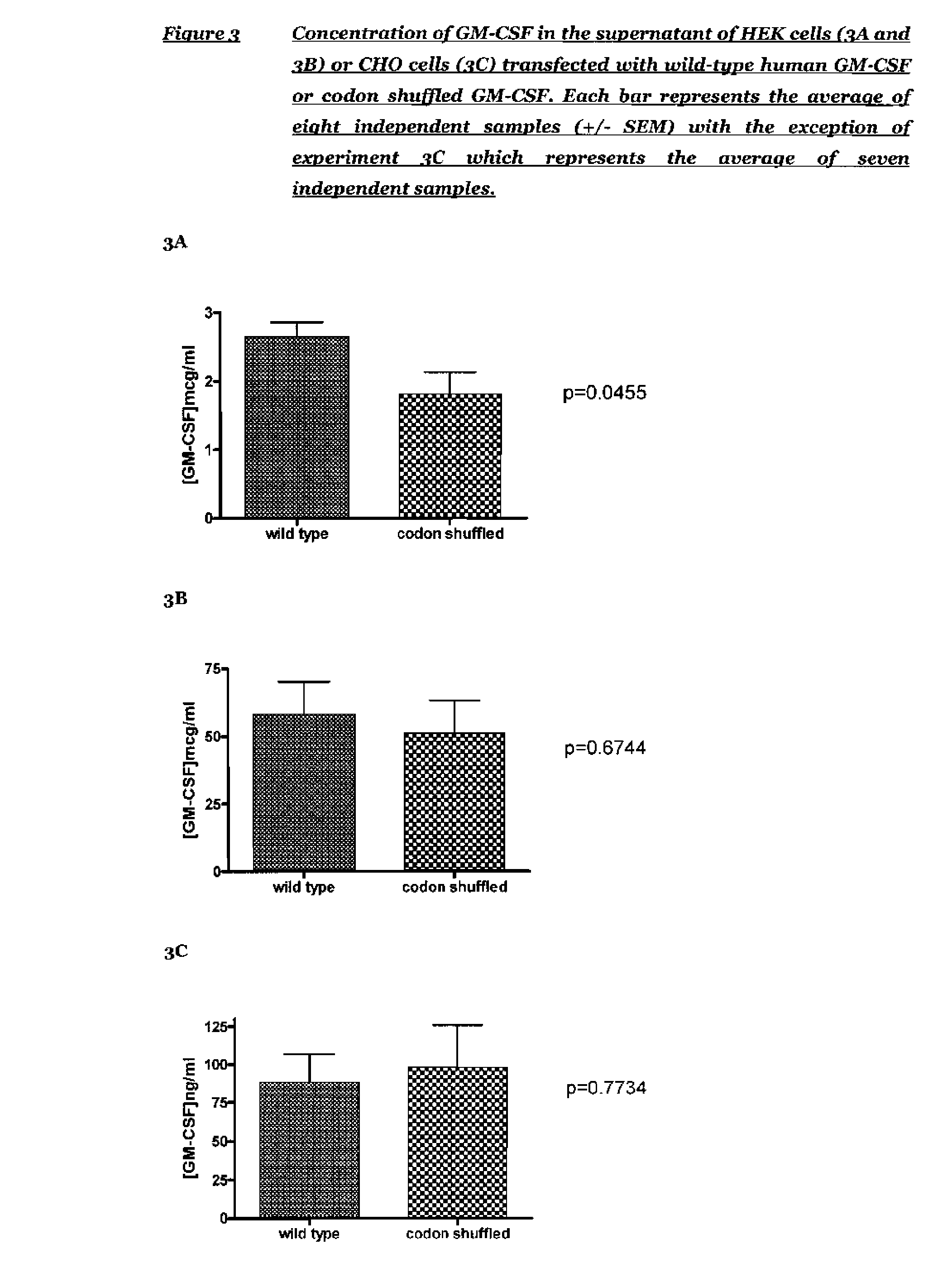Synthetic gene
a technology of synthetic genes and genes, applied in the field of synthetic genes, can solve the problem of small risk of homologous recombination of plasmid dna into the host genome, and achieve the effect of reducing risk
- Summary
- Abstract
- Description
- Claims
- Application Information
AI Technical Summary
Benefits of technology
Problems solved by technology
Method used
Image
Examples
example 1
Design of a Gene Encoding Codon Shuffled Human GM-CSF
[0104]The human GM-CSF DNA sequence was broken down into its constituent codons and these were pooled by their corresponding amino acid. For example the gene contains nine alanine residues represented by the codons GCA (x2), GCC (x5) and GCT (x2). The codons were manually reassigned in a different order to create a new DNA sequence which will translate the same amino acid sequence but would have reduced homology to the original wild-type sequence. Codons were assigned from the pools so that wherever possible a different codon was used relative to the corresponding co don in the wild type gene sequence. Once the initial reassignment of codons was complete, an alignment comparison with the wild type sequence was made and where necessary individual codon swaps made manually in order to A) ensure there were no stretches of identity greater than 20 base pairs and B) ensure that no clustering of the rare codons had occurred which might ...
example 2
Expression of Human GM-CSF from pMNB003 and pMNB004
[0106]In order to confirm expression of GM-CSF from the codon shuffled and wild-type GM-CSF plasmids, a number of DNA batches were made for each of the codon shuffled and wild-type human GSM-CSF plasmids and used to transiently transfect HEK293 cells. After 48 hours the supernatants were harvested and a human GM-CSF ELISA performed to compare the expression of the two constructs. The human GM-CSF ELISA was supplied as a kit of matched antibody pair, human GM-CSF standard and enzyme conjugate by R&D Systems (catalogue number DY215). FIG. 1 shows the standard curve for an ELISA using the standard components in the kit.
[0107]In a preliminary experiment, the concentration of GM-CSF in the supernatants of HEK cells transfected with wild type GM-CSF plasmid and codon shuffled GM-CSF plasmid was assessed. The expression of GM-CSF was assessed by ELISA and converted into concentration using the standard curve shown in FIG. 1. The results p...
example 3
Bioactivity Assay
[0110]The human erythroblastoma cell line TF-1 is able proliferate in response to hGM-CSF. Following transient transfection of wild-type and codon shuffled human GM-CSF into HEK293 cells, supernatants were harvested and tested for their activity in a TF-1 bioassay. Dilutions of the cell supernatants were added to TF-1 cells and their proliferation measured after 72 hours.
[0111]FIG. 4 and FIG. 5 show comparisons of wild type (wta, wtc) and codon shuffled (csa, csb) GM-CSF plasmids in a TF-1 proliferation assay normalised to concentration of GM-CSF in the supernatant (determined by quantitative ELISA). The results confirm that the GM-CSF expressed from both the wild-type and codon shuffled constructs is bioactive and of equivalent activity.
Summary of Bioactivity Data
[0112]A codon shuffled human GM-CSF gene has been constructed which has 76.9% identity to the wild type DNA sequence but transcribes an amino acid sequence which is identical to the wild type gene product....
PUM
| Property | Measurement | Unit |
|---|---|---|
| time | aaaaa | aaaaa |
| frequencies | aaaaa | aaaaa |
| resistance | aaaaa | aaaaa |
Abstract
Description
Claims
Application Information
 Login to View More
Login to View More - R&D
- Intellectual Property
- Life Sciences
- Materials
- Tech Scout
- Unparalleled Data Quality
- Higher Quality Content
- 60% Fewer Hallucinations
Browse by: Latest US Patents, China's latest patents, Technical Efficacy Thesaurus, Application Domain, Technology Topic, Popular Technical Reports.
© 2025 PatSnap. All rights reserved.Legal|Privacy policy|Modern Slavery Act Transparency Statement|Sitemap|About US| Contact US: help@patsnap.com



